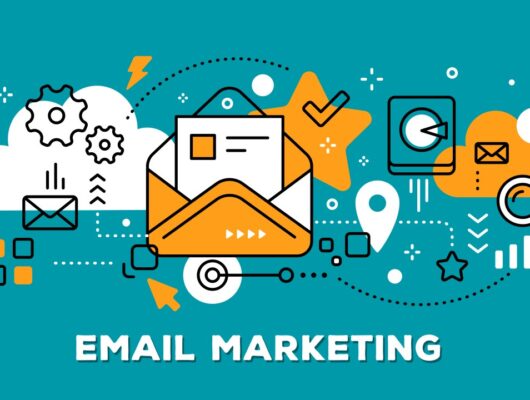The fashion industry is one of the largest and fastest-growing sectors in e-commerce, driven by shifting consumer preferences and digital innovation.
However, with intense competition and rapidly changing trends, effective marketing is essential to capture attention and build loyalty.
This article outlines actionable strategies to help fashion e-commerce brands stand out, attract customers, and boost sales.
Why Fashion Marketing Is Unique in E-commerce
- Highly Visual Products: Fashion relies heavily on aesthetics, requiring high-quality visuals and branding.
- Trend Sensitivity: Consumers expect up-to-date styles, making timely marketing campaigns crucial.
- Personalization: Shoppers seek curated experiences based on their style and preferences.
- High Return Rates: Effective marketing must reduce uncertainty about fit, quality, and style.
Strategies for Fashion E-commerce Marketing
- Showcase Stunning Visuals
- Use professional photography to highlight fabric textures, colors, and details.
- Offer 360-degree views or videos showing clothes in motion.
- Style products with on-trend accessories to inspire outfit ideas.
- Leverage Social Media Platforms
- Instagram: Share visually appealing posts, reels, and stories with hashtags like #OOTD (#OutfitOfTheDay).
- TikTok: Post engaging videos showcasing styling tips or outfit transformations.
- Pinterest: Create mood boards and pin seasonal trends to attract fashion-savvy shoppers.
- Focus on User-Generated Content (UGC)
- Encourage customers to share photos wearing your products.
- Feature UGC on your website, social media, and marketing emails.
- Run hashtag campaigns like #WearItYourWay to create community engagement.
- Offer Virtual Try-On Features
- Use augmented reality (AR) tools to let customers try on items virtually.
- Provide size guides and fit suggestions based on customer measurements.
- Influencer Collaborations
- Partner with fashion influencers to showcase your products authentically.
- Use micro-influencers to target niche audiences with higher engagement rates.
- Host giveaways or style challenges to boost visibility and interaction.
- Run Seasonal and Trend-Based Campaigns
- Promote collections based on seasons, holidays, or specific events (e.g., “Summer Essentials” or “Wedding Season Looks”).
- Highlight trending items like “statement blazers” or “athleisure sets” to attract trend-conscious shoppers.
- Invest in Paid Advertising
- Use Facebook and Instagram ads to target specific demographics, such as age, location, and interests.
- Run Google Shopping ads for queries like “black cocktail dress” or “men’s casual shirts.”
- Retarget visitors with dynamic ads featuring products they browsed or added to their carts.
- Create Engaging Content
- Write blogs on topics like “How to Style Basics” or “Wardrobe Essentials for Every Season.”
- Share behind-the-scenes content, such as the design process or a day in the life of your team.
- Post fashion lookbooks or curated collections to inspire shoppers.
- Personalize the Shopping Experience
- Offer AI-driven recommendations based on browsing or purchase history.
- Send personalized emails with product suggestions or exclusive offers.
- Allow shoppers to save favorite items or create wish lists for future purchases.
- Offer Promotions and Perks
- Run flash sales, discounts, or limited-time offers to create urgency.
- Provide free shipping and easy returns to reduce purchasing hesitation.
- Launch loyalty programs to reward repeat customers with points or exclusive discounts.
Best Practices for Fashion E-commerce Marketing
- Mobile Optimization: Ensure your website is mobile-friendly, as most fashion shoppers browse and buy on their phones.
- Sustainability Focus: Highlight eco-friendly practices like sustainable fabrics or ethical sourcing.
- Detailed Product Descriptions: Include material, fit, care instructions, and sizing information to reduce returns.
- Customer Reviews: Showcase reviews and photos to build trust and provide social proof.
Tools to Enhance Your Fashion Marketing
- Canva: To create eye-catching social media posts and ads.
- Shopify AR: For virtual try-on and interactive product displays.
- Klaviyo: For email marketing and personalized campaigns.
- Later: To schedule and manage social media content efficiently.
Common Challenges and Solutions
- Keeping Up with Trends
- Monitor fashion influencers and trend forecasting platforms to stay ahead.
- Use data analytics to identify trending products in your inventory.
- High Return Rates
- Offer detailed size guides and AR tools to ensure proper fit.
- Encourage honest customer feedback to improve products and descriptions.
- Building Brand Loyalty
- Focus on exceptional customer service and consistent communication.
- Create a community through engaging campaigns and social media interaction.
Conclusion
E-commerce fashion marketing is about combining creativity, strategy, and innovation to connect with customers in a meaningful way.
By leveraging visual storytelling, influencer collaborations, and personalized experiences, your fashion brand can thrive in the competitive online marketplace.
Would you like to dive deeper into specific campaign examples or tools for execution? Let me know!







